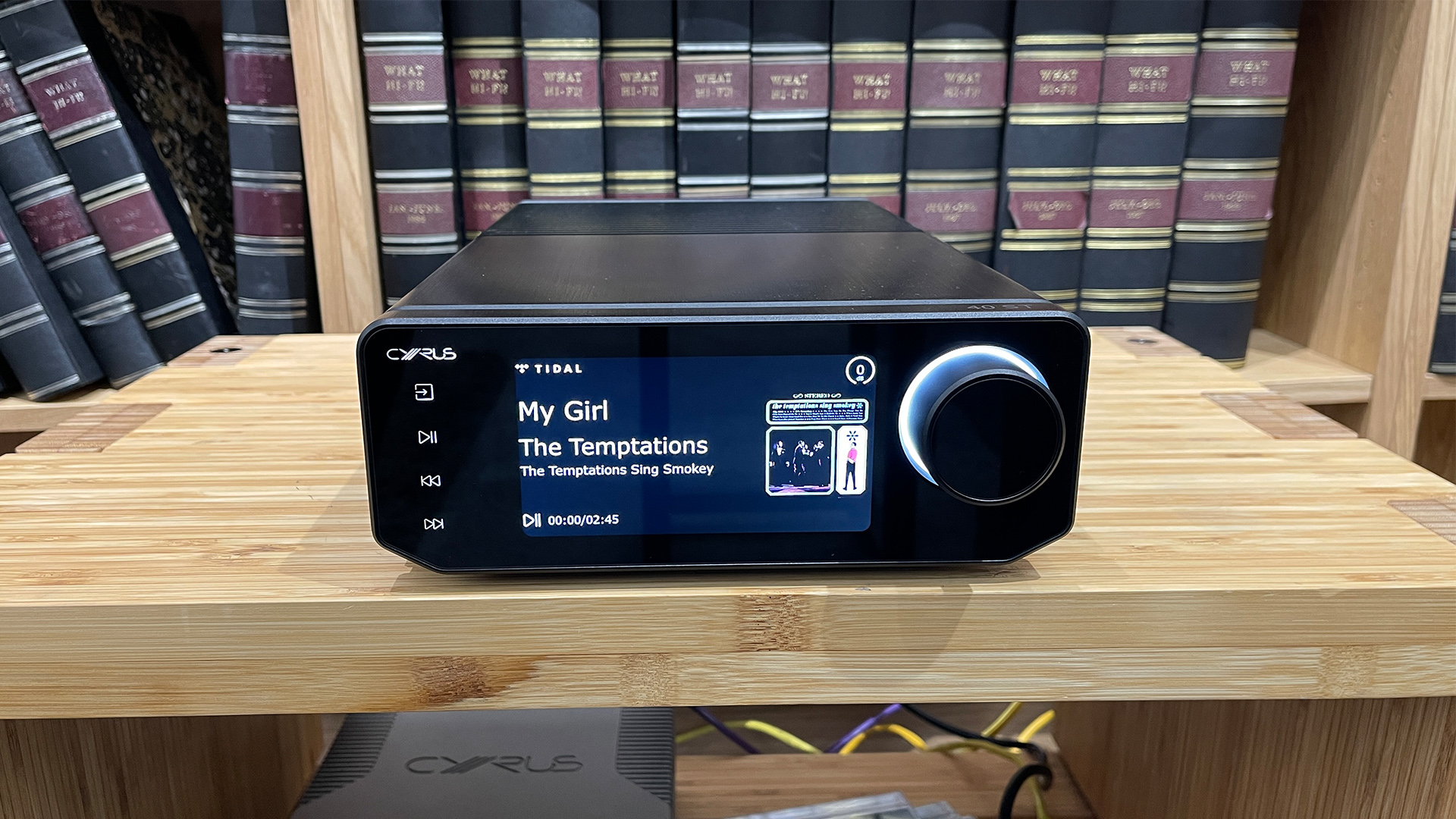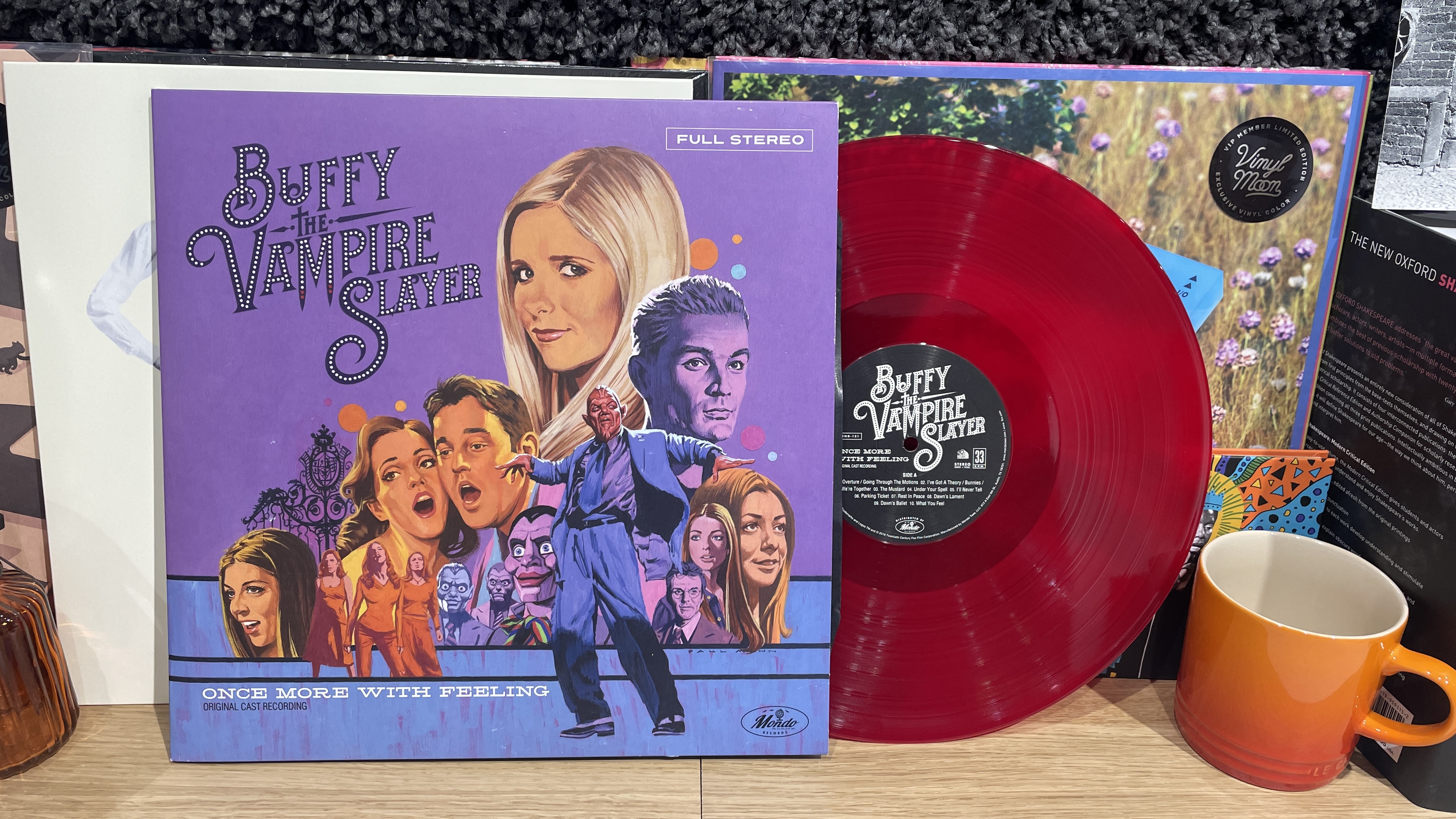Nick Clarke interview: Cyrus Audio's MD has an eye to the future
Cyrus MD Nick Clarke talks about his career that spans Audiolab, Arcam, Mark Levinson and now Cyrus

Cyrus Audio is embarking upon 'a new beginning' with its 40 Series – a brand new range of premium hi-fi products comprising, so far, of a new network music streamer, an integrated amplifier, a CD player and an external power supply. All sporting new designs and with the intent of delivering a new level of performance – and if our review of the Cyrus 40 ST is anything to go by, it certainly bodes well for the rest of the new range.
We sat down with the British brand's MD, Nick Clarke, to talk through his experience in the industry, the development of this new 40 Series and what the future holds for Cyrus.

What Hi-Fi?: How did you get interested in hi-fi?
Nick Clarke: I'd done my A levels and had a place at university, but felt a little bit burnt out, and so got a job instead. That was a mistake. I spent a year playing with industrial lasers, measuring sugar purity. Then, one of my mates says, “Hey, I'm working at this hi-fi company. They're looking for people in the service department. Why don't you come along?” I got the job, and that company was Audiolab. I was allowed a day release to go to college, so I could effectively write-off my mistake of not going to university and eventually got my degree.
What happened next?
I started in the service department at Audiolab and over time went on to run it before moving to R&D as a junior engineer. Then, Tag McLaren bought Audiolab (around 1997). A lot of the old Audiolab R&D team left around that time, and I was tasked with rebuilding it. We were thrown in at the deep end but ultimately designed some really strong products such as the AV32R processor.
My wife, who was a tax accountant at the time, was looking at the company’s finances, and she says, “They're going to shut that down. You should get out of there,” so I did and went to IAG (International Audio Group).
Get the What Hi-Fi? Newsletter
The latest hi-fi, home cinema and tech news, reviews, buying advice and deals, direct to your inbox.
IAG already had Quad and Wharfedale at the time. It was the early days of its factory in Shenzhen, China, and I helped to set up surface mount lines and other machines there. A year later, wouldn’t you believe it, my wife was right and Tag McLaren shut down. IAG ended up buying the company, so I was once again working on Audiolab products.
I worked at IAG for five years, and that meant spending long stretches out in China. This became an issue over time as I had a young family. I moved back to a UK-based job at Arcam. I spent ten years at Arcam before it was bought by Harman and once that happened, another five years on Harman Luxury brands like Mark Levinson, JBL Synthesis and Lexicon as well as continuing with Arcam.
There were a lot of good things about working for Harman, but my role involved a lot of travelling across the world and I was doing close to 200,000 miles a year. It wasn’t easy. It isn’t an old man’s game, particularly when you have a family, so I moved to Cyrus as Managing Director in January 2022.

What defines a Cyrus product for you?
That's always a difficult one. I can give you a glib answer of good engineering and sound quality combined with value for money, which Cyrus products certainly are. But to me, I think it's what I'd call an understated elegance. A Cyrus doesn’t shout, it just does its job well.
Cyrus products are known for their half-width form factor. Is that size an issue from an engineering point of view?
In products like say, a CD player or a streamer, it isn’t a problem as there is enough space to get everything in. With amplifiers, it can very much set a limitation on the size of the transformer you can have and how much heat you can get out of the box. So the packaging is more difficult, but it also pushes you to come up with some clever ideas as well.
Is there a signature Cyrus sound?
I believe the job of our products is to reproduce the music as accurately as possible, and if they do that job properly, how can we have a Cyrus sound, right? With the new 40 series, I've tried to go for a balance of everything. The 40 series audio listening tests and tuning were done using a lot of live material, including some of the concerts I've actually been to, so I know what they should sound like. I have recordings of some of Peter Gabriel’s tours, straight from the mixing desk, and those are some of the things that I use for audio tuning.
Do you benchmark at all against price rivals?
We do, but not slavishly. We will always benchmark against our previous products, of course, but we will also listen against certain ‘hot’ products. However, I wouldn’t go and get 10 amplifiers, for example, and do a shootout.

What is the process when developing a new range like the 40 series?
First, we have got to decide what we want the new product to be, how it should differ from existing products, and the things we want to improve. Then we work with some industrial designers. These days, the rendering software is incredible, so you can come up with photo-realistic renders. They come back with around ten options which we whittle down to three or four. We then get the rest of the company involved from every department – engineering, sales, manufacturing and servicing – so everyone has an input. That way we can decide the range of features and connections to include, as well as ensure that the unit can be manufactured and serviced reliably.
Next, we make a 3D model of the product and the remote control, because the 40 series remote control is also completely designed from scratch. This way you can just hold it in your hand. You could physically see how the product looks.
At that point, we are able to put it next to our Classic or XR product to make sure that it doesn’t look out of place or see if there is anything untoward. The next phase from that is what we call a CMF model – colour, material and finish. In this case, we put a screen in it as well, so it would light up properly so you can see how it would look. And then we move on to the prototypes. The complete process from start to finish typically takes around 18 months to two years for a brand-new range like the 40 series.
What does the 40 series represent to Cyrus?
This is a completely new range, a completely new design, a completely new approach, but it still has a lot of what the 40 years of heritage stands for, you know. It's still about sound quality, good engineering and value for money. I'd like it to be seen as a new beginning for the brand.
What do you think hi-fi will look like in 20 years?
We are seeing a shrinkage of the separates market. So, I think we will see a lot more convergent products, so-called all-in-ones or streaming amplifiers. A wide range of connectivity will be important and virtually everything will have some level of streaming to it. It's just the convenience.
MORE:
Read our full Cyrus 40 ST review
The Cyrus 40 Series promises a new beginning for the British hi-fi brand
Check out the best music streamers we recommend across all budgets

Ketan Bharadia is the Technical Editor of What Hi-Fi? He has been reviewing hi-fi, TV and home cinema equipment for almost three decades and has covered thousands of products over that time. Ketan works across the What Hi-Fi? brand including the website and magazine. His background is based in electronic and mechanical engineering.
